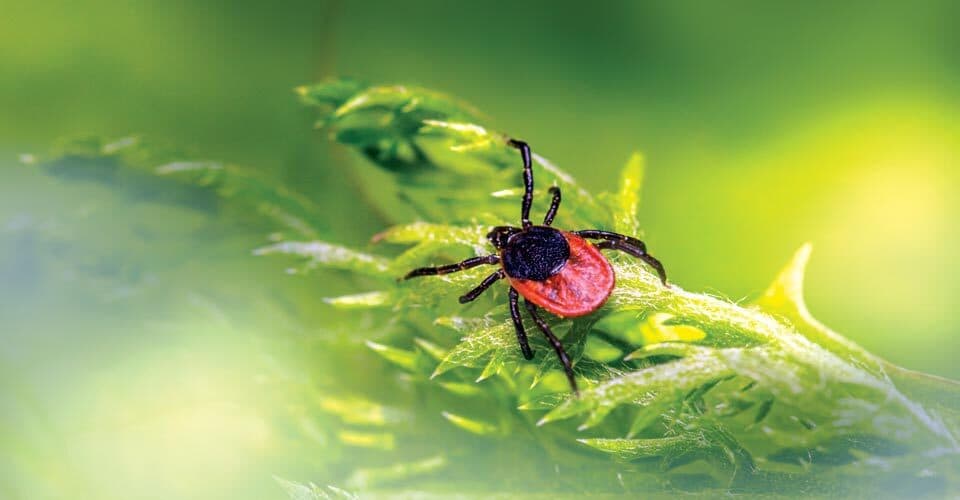Wildlife Ecologist Explains How to Get Ticks Off, Not Ticked Off
Ask a Researcher: Advice for Real Life
By Karen Shih ’09
Photo by Erik Karits/Pexels
Looking forward to roasting marshmallows by a campfire or harvesting a bounty from your garden? Look out for a little something ready to crash your fun: ticks, tiny bloodsuckers that emerge in full force this time of year.
Assistant Professor Jennifer Mullinax, a wildlife ecologist in the Department of Environmental Science and Technology leading studies in Maryland to reduce tick-borne illnesses, offers explanations and tips for tick-free summer fun.
HOW THEY GET YOU:
They climb up a bush or tall grass, wave their little arms and wait for something to brush by, then latch on.
WHAT YOU COULD SUFFER:
Lyme disease, which can be treated with antibiotics if caught early, but can become a severe chronic disease if not; anaplasmosis, which causes fever, chills and muscle aches; or Alpha-gal syndrome, an allergy to a molecule in red meat.
HOW YOU CAN PROTECT YOURSELF:
Spray the insecticide permethrin on your clothing and shoes outside and let them dry before wearing. Choose long pants and close-toed shoes. From May to October, get naked after you’re in risky areas, looking at every crevice. If you gently pull off a tick within 24 hours, it likely hasn’t had time to give you anything.
HOW TO TICK-PROOF YOUR PROPERTY:
Create a three- to four-foot mulch barrier next to woods or brush, or fence it to keep deer out. Buy tick tubes or make them with cotton balls soaked in permethrin placed inside toilet paper rolls. Mice take fibers back to their nests and repel ticks. Do this for a couple years, and you’ll help reduce the prevalence of these diseases nearby.
0 Comments
Leave a Reply
* indicates a required field

